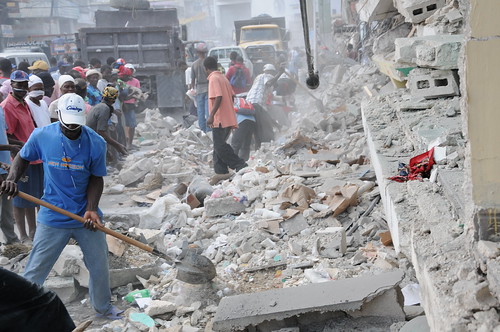美國環保署(EPA)化學家Cate Jenkins博士,多年來控訴環保署的有毒粉塵限制標準不夠精準,危害9/11災難現場初期反應人員的健康。近期法院終判決Jenkins勝訴,EPA必須提高腐蝕性粉塵的限制標準。
Jenkins和國家公務人員組織「環境責任公職人員組織」(PEER)聯合提起訴訟,要求EPA重審有毒粉塵標準。
雖然EPA 2013年試圖解聘這位化學家,Jenkins仍堅決主張,建物拆除和水泥製造過程中散發的鹼性腐蝕性粉塵,不只傷害初期反應人員的肺部和呼吸道,也危害工人和民眾的健康。
美國聯邦巡迴區上訴法院13日判決,EPA必須在2016年3月21日前回應請願書的要求,「並事先公布法規制定提案、法規提案或是初步確認否決請願。」
建物拆除和水泥製造過程中散發的鹼性腐蝕性粉塵,會造成呼吸道和肺部化學性灼傷。但依目前EPA的標準,鹼性腐蝕性粉塵的限制標準,不在危險廢棄物管理範圍內。
因此EPA過去從未警告公眾鹼性腐蝕性粉塵的危害,包括911後拆除世貿大樓時。
EPA已依法承諾,將決定是否提高腐蝕性粉塵限制標準,避免911恐怖攻擊後,初期應變人員衝入毒性粉塵中,導致肺部永久性傷害的事件再次發生。
911恐怖攻擊10周年,PEER和Jenkins一同發起正式立法請願書,要求EPA回應。但3年過去,EPA仍沒有任何動作,PEER向美國聯邦巡迴區上訴法院按鈴控告。2014年10月8日,法院要求EPA回應請願書。
上訴法院亦要求EPA在做出決定前,於2015年7月13日起120天內提出進度報告。同時,EPA已公開新粉塵標準發展的技術。
已有35年歷史的舊EPA粉塵管制標準,比聯合國、歐盟和加拿大的鹼性腐蝕物質標準還要寬鬆10倍。
A chemist with the U.S. EPA who protested for years that the agency’s toxic dust standard is scientifically inaccurate and jeopardized the lives of 9/11 first responders, has won a lawsuit that will force the agency to consider tightening its limits on corrosive dust.
Although the EPA tried to fire her in 2013, chemist Dr. Cate Jenkins maintains that the alkaline corrosive dust released during building demolition and cement manufacturing poses a danger to the lungs and nasal passages of not only first responders but other workers and the public.
The lawsuit to force the EPA to decide on their petition for a review of the dust standard was brought by Dr. Jenkins and the Public Employees for Environmental Responsibility, PEER, a national association representing government workers in natural resource agencies.
In a filing adopted late Friday by the U.S. Court of Appeals for the DC Circuit, the EPA is required to act on the petition by March 31, 2016 with “an advanced notice of proposed rulemaking, a proposed rule, or a tentative determination to deny the petition.”
The EPA is now legally committed to decide whether to tighten its corrosive dust limits so as to prevent the tragedy that befell the World Trade Center First Responders who waded into dust so caustic it permanently damaged their lungs, says PEER attorney Paula Dinerstein.
Alkaline corrosive dust released during demolitions and cement manufacturing can cause chemical burns, especially to tissues of the nasal passages and lungs. But under present EPA standards these levels are exempt from hazardous waste regulations.
So EPA has never before issued any warning to the public about the alkaline, corrosive properties of dust from implosion demolitions of large buildings, including at the World Trade Center following the 9/11 attacks.
Ten years after the 9/11 attacks, PEER and Jenkins filed a formal rulemaking petition urging EPA to correct its incorrect corrosivity standard.
After three more years of agency inaction, PEER sought a writ of mandamus before the U.S. Court of Appeals for the DC Circuit. On October 8, 2014, the court ordered EPA to respond to the petition.
Until EPA makes its decision, the appeals court has directed the agency “to file status reports at 120-day intervals beginning July 13, 2015.”
Meanwhile, EPA has published contract assignments to provide the technical basis for new dust standards.
The current 35-year old EPA regulation is 10 times more lax than the presumed safe levels for alkaline corrosives set by the United Nations, the European Union and Canada.
※ 全文及圖片詳見:ENS




